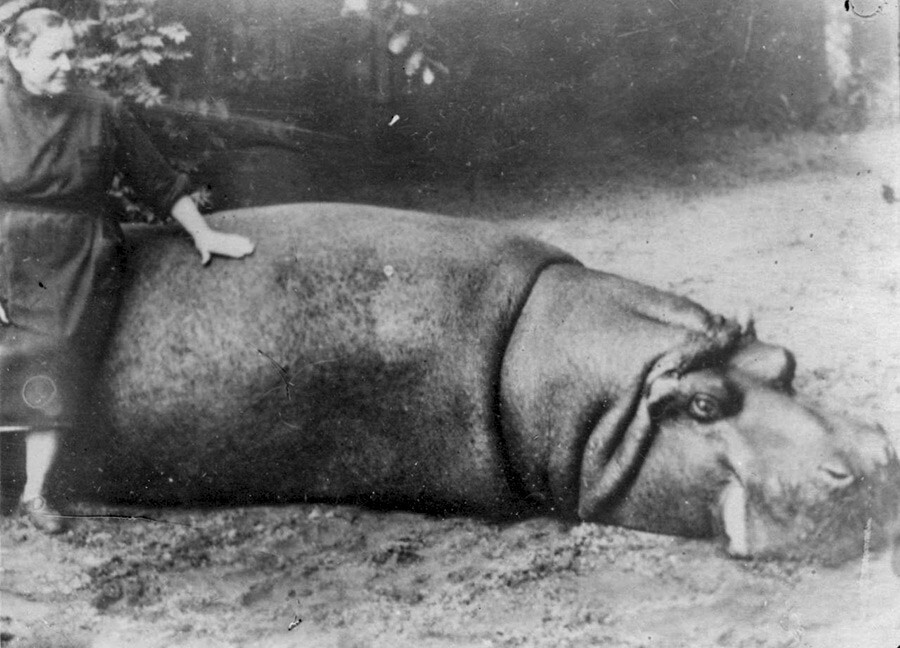
World War II was a severe ordeal not only for Leningrad’s (now St. Petersburg) citizens, but also for the inhabitants of the local zoo. The animals suffered from hunger and cold, experienced constant stress from shelling and died from bombs.
Part of the zoo was evacuated to the rear before the enemy encircled Leningrad in September 1941. However, many animals remained and, among them, was ‘Krasavitsa’ (‘Beauty’), one of the largest female hippopotamuses in the world's zoos.

The two-ton giant needed up to 40 kilograms of food and up to 300 liters of water a day. ‘Beauty’ would never have survived the blockade, if not for the efforts of the zoo staff, especially Yevdokia Dashina.
There was not enough food in the city for people either, so the employees did the best they could. For the hippopotamus, they prepared porridge from sawdust. It was steamed and boiled for a long time, adding cake, bran, some vegetables and bread.

Every day, Dashina brought 400 liters of water from the Neva on a sledge. In addition to drinking, ‘Beauty’ needed daily washing, without which her skin would dry out, crack and bleed. After water procedures, the woman would rub camphor oil and seal oil into the skin of her “pet”.
Yevdokia also provided the hippo with psychological support. During shelling and air raids, ‘Beauty’ would run to her pool, which had long since run out of water, would lay down and moan. Dashina would go down to her, hug her and try in every way to calm her down.

Through the efforts of the zoo staff, many animals survived the terrible blockade. ‘Beauty’ also survived. She died in 1951 at an advanced age for hippos - she was about 45 years old.
If using any of Russia Beyond's content, partly or in full, always provide an active hyperlink to the original material.
Subscribe
to our newsletter!
Get the week's best stories straight to your inbox